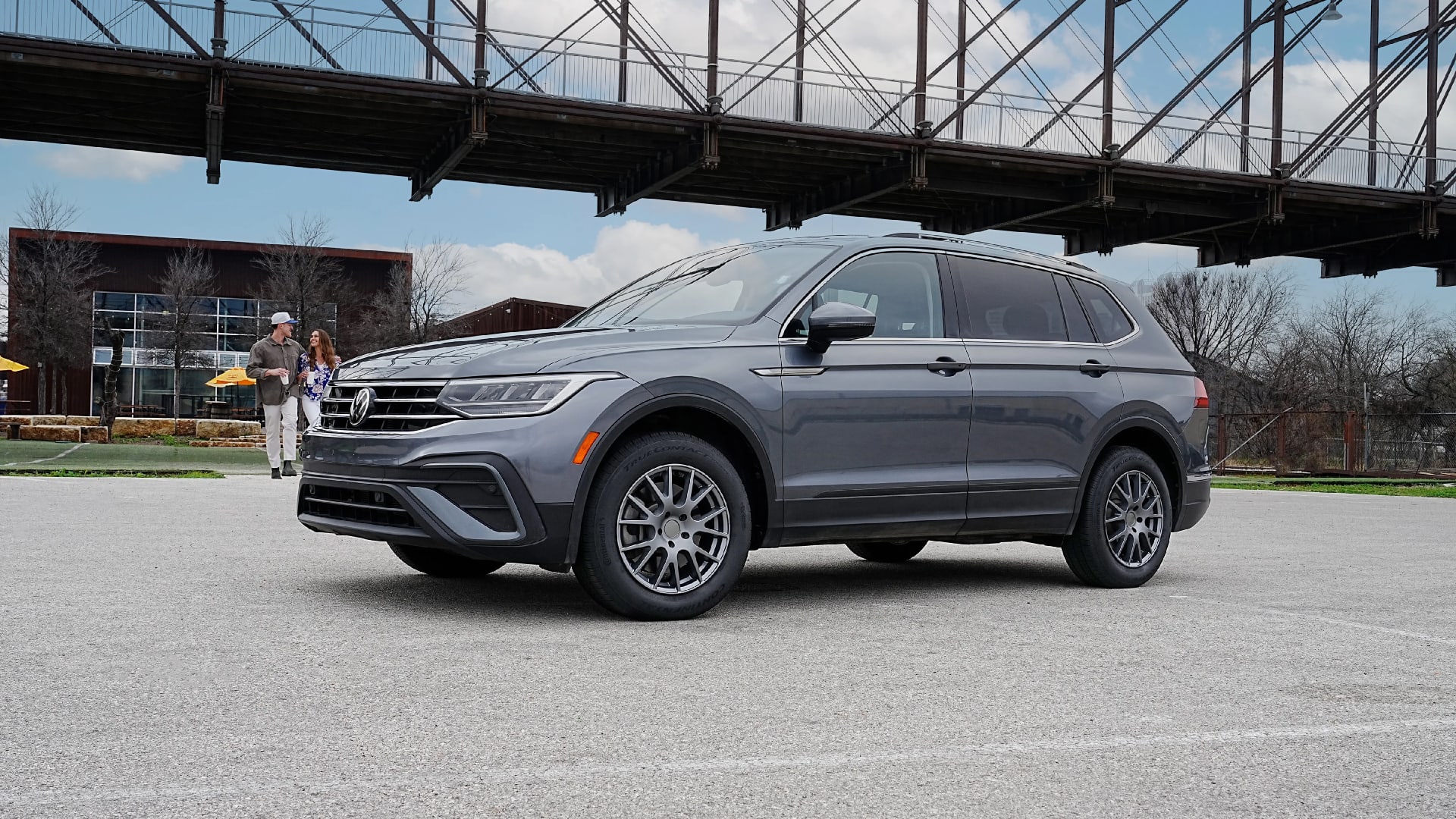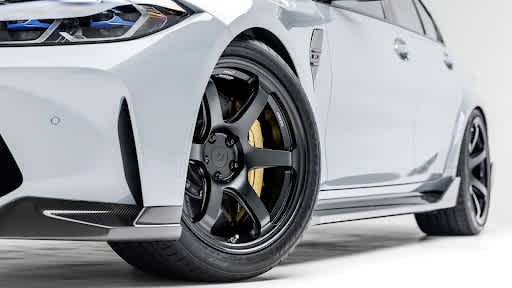Compare
Touring vs Performance Tires: Which Is Right for You

Free shipping
Best price guarantee
Special pricing
Financing with Resolve
Easy returns
Compare

When it comes to choosing the right tires for your vehicle, understanding the differences between various tire types is crucial. Two popular categories that often come up in tire discussions are touring tires and performance tires.
Each type of tire is designed to cater to specific driving needs and preferences. By examining the unique characteristics and benefits of touring and performance tires, you can make an informed decision about which option best aligns with your vehicle and driving style.
In this article, we'll dive into the key differences between touring and performance tires, helping you understand how they impact your driving experience. From ride comfort to handling capabilities, we'll explore the factors that set these tire types apart.
Touring tires and performance tires are designed with different priorities in mind. Touring tires emphasize comfort, quietness, and long tread life—making them an excellent choice for daily driving and long-distance travel. These tires feature wider tread patterns and softer rubber compounds, which help absorb road imperfections and reduce road noise. The result is a smooth, relaxed ride that prioritizes passenger comfort over sporty handling.
On the other hand, performance tires are engineered to deliver sharp handling, exceptional cornering grip, and high-speed capability. They feature larger tread blocks, stiffer sidewalls, and unique tread compounds that optimize dry traction and steering response. Performance tires allow drivers to experience their vehicle's full potential, especially during spirited driving or on the racetrack.
While touring tires offer a more balanced approach to handling and all-season traction, performance tires prioritize dynamic driving characteristics in warmer weather conditions, typically in temperatures above 45 degrees Fahrenheit. The trade-off is that performance tires may have a firmer ride quality and shorter tread life compared to touring tires. Ultimately, the choice between touring and performance tires depends on your driving style, vehicle type, and the level of performance you desire.
 Touring tires stand out for their ability to deliver a serene driving experience, prioritizing passenger comfort with their sophisticated design. They utilize advanced tread technology to reduce road noise and absorb vibrations, offering a ride that feels smooth and controlled across various terrains. This focus on luxury and quietness makes them an ideal choice for drivers who often find themselves on long journeys or routine commutes.
Touring tires stand out for their ability to deliver a serene driving experience, prioritizing passenger comfort with their sophisticated design. They utilize advanced tread technology to reduce road noise and absorb vibrations, offering a ride that feels smooth and controlled across various terrains. This focus on luxury and quietness makes them an ideal choice for drivers who often find themselves on long journeys or routine commutes.
With an emphasis on reliability, touring tires provide stable handling and versatile traction across a range of weather conditions. Their tread patterns are engineered to maintain grip in dry, wet, and light winter weather, ensuring confidence behind the wheel year-round. This adaptability makes them a staple for daily drivers who encounter diverse weather conditions. Touring tires are noted for their longevity, frequently offering extended tread life warranties that help spread costs over time. Generally more economical than their performance counterparts, they present a cost-effective solution without compromising on quality or endurance. Their robust construction and reasonable pricing make them a practical option for those seeking dependable performance for commuting or family travel.
Touring tires prioritize a comfortable ride, which can mean they don't deliver the immediate steering feedback some drivers prefer. Their design focuses on providing a smooth driving experience, which might lessen the sense of direct connection with the road. For those seeking a more engaged driving experience, this can translate to a softer response when navigating turns.
Regarding cornering, touring tires exhibit less grip compared to performance-focused options. The emphasis on long-lasting tread and comfort results in tires that may not hold the road as firmly during tight maneuvers. This characteristic can lead to less confidence in handling when taking curves at speed, making them less ideal for drivers who enjoy pushing their vehicle's capabilities.
High-speed performance and track conditions are not the forte of touring tires. Their construction, aimed at durability over aggressive traction, can fall short in demanding driving scenarios. This can manifest as less effective traction under both wet and dry conditions, potentially impacting performance when precision and control are essential.

Performance tires stand out by offering an immediate and responsive driving experience. Their specialized construction, featuring larger tread blocks and stiffer sidewalls, enhances the vehicle's grip on dry surfaces, allowing for precise control. This design translates into quick reactions to steering inputs, providing a level of agility that drivers seeking a spirited drive will appreciate. The result is a tire that communicates effectively with the road, delivering a driving experience filled with confidence and control.
In terms of cornering, performance tires excel by providing substantial traction and heightened stability. They are engineered to withstand the forces of aggressive driving, maintaining their hold on the road through sharp turns. This robust cornering capability, combined with enhanced lateral support, ensures that vehicles equipped with performance tires can maintain their trajectory with precision. It's a key advantage for those who enjoy the thrill of tackling challenging roads or participating in track events.
The innovative tread compounds used in performance tires are tailored for high-performance environments. These compounds are designed to optimize traction and handling, allowing drivers to extract the full capabilities of their vehicles. Whether navigating a high-speed straightaway or maneuvering through tight curves, performance tires offer the assurance of consistent performance. This makes them an ideal choice for drivers who want to experience their vehicle’s potential in terms of speed, agility, and overall driving dynamics.
Performance tires, while offering exhilarating handling and speed capabilities, come with compromises that may not suit every driver. Their advanced construction often prioritizes road feedback over cushioning, resulting in a ride that can feel more connected to surface irregularities. This characteristic, while beneficial for sport-focused driving, might not be ideal for those who prefer a softer, more comfortable experience on everyday roads. The lifespan of performance tires is often limited due to their focus on optimizing grip with softer rubber compounds. This design leads to faster wear, necessitating replacements more often than other tire types. For budget-conscious drivers, this could translate into higher overall tire expenses over time, as these tires often require investment in both initial purchase and frequent upkeep.
Navigating wet conditions can present challenges for performance tires. While they excel in dry scenarios, their grip-oriented design may not provide the same level of assurance on wet or slick surfaces. This can affect both stopping distances and lateral traction, requiring drivers to adjust their habits in adverse weather. They also aren’t suitable for driving in light winter weather conditions unless they are UHP all-season type of tires, which deliver both solid performance and year-round traction. Additionally, these tires can contribute to a more noticeable noise level when driving on uneven or coarse roads, potentially detracting from the overall enjoyment of some vehicle owners.

Selecting the right tires involves evaluating your driving habits and priorities. If you prefer a driving experience that emphasizes efficiency and ease, touring tires might be more suitable for your needs. Conversely, if you relish the excitement of a more engaging drive, performance tires might better suit your preferences.
The vehicle you drive plays a critical role in determining the most appropriate tire type. High-performance vehicles like a Dodge Charger, Ford Mustang, or Audi A6 often need the enhanced grip and handling offered by performance tires.
In contrast, touring tires are well-suited for vehicles like family sedans and SUVs like a Toyota Camry, Honda Accord, or Toyota RAV4, where comfort and practicality are often paramount.
Additionally, consider the typical weather conditions you face. Touring tires are often designed for year-round use, offering steady traction in varying conditions. Performance tires, however, may provide optimal traction and handling in warmer weather conditions, in dry and wet conditions (UHP all-season tires being an exception). Budget is another important consideration when choosing tires. Performance tires can have higher costs not only at purchase but also due to their faster wear rate. Touring tires generally offer a more cost-effective option, with their longer lifespan potentially reducing the frequency of replacements.
Ultimately, your decision hinges on what you value most: the comfort and controlled noise levels of a touring tire or the precise response and grip of a performance tire. Touring tires excel in providing smooth and quieter rides, ideal for those who value a serene driving experience. On the other hand, if extracting every ounce of performance from your vehicle is key, the responsive nature of performance tires might meet your expectations.
The choice between touring and performance tires comes down to your unique driving needs and preferences. By understanding the key differences between these tire types, you can make an informed decision that aligns with your vehicle and driving style.
If you're ready to find the perfect set of tires for your drive, let SimpleTire’s helpful agents assist you in choosing the right one!
Search By